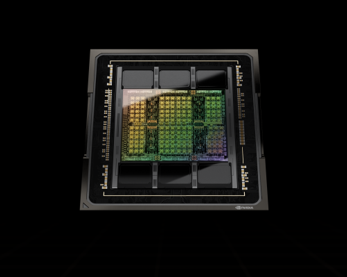
Sandia National Laboratories has announced a new project with NVIDIA to pursue critical research and development of memory technologies. This collaborative agreement between the three National Nuclear Security Administration (NNSA) laboratories, Sandia National Laboratories, Lawrence Livermore National Laboratory and Los Alamos National Laboratory, is the fourth project initiated since the inception of the Advanced Memory Technology (AMT) program. The AMT program is part of NNSA’s post exascale computing initiative portfolio which has the objective of sustaining technology research and development momentum leveraging our strong engagement with industry.
This is part of the initiative that was started by the PathForward program, which aims to foster a more robust domestic High Performance Computing (HPC) ecosystem by increasing U.S. industry competitiveness in next-generation HPC technologies.
“The research and development conducted as part of the NNSA’s AMT program is focused on developing a family of technologies targeted towards future HPC and AI system procurements,” said Advanced Simulation and Computing (ASC) Program Director Thuc Hoang. “This research, funded by the ASC program, targets improving application performance by more than 40 times over exascale class systems in the next five years.” Performance relative to systems like El Capitan, currently being installed at Lawrence Livermore National Laboratory.
The AMT program is charged with addressing a decades long disparity between advancements in computing and memory capabilities.
“Improvements in memory bandwidth and latency have not kept pace with the increase of computational capability over the past two decades,” said Robert Hoekstra, Senior Manager of the Extreme Scale Computing group at Sandia. “ASC mission applications are often memory bandwidth or latency bound. Improvements in this area will have a huge impact on application efficiency.”
Simon Hammond, Federal Program Manager for the ASC’s Computational Systems and Software Environments program, said, “The ASC program partnered with NVIDIA to power our pre-exascale Sierra supercomputer, helping to transition some of the most demanding physics workloads in the world to accelerated computing. The project being announced with NVIDIA today continues that partnership and will help to ensure that future ASC supercomputing platforms remain some of the highest performing and most productive scientific platforms in the world.”
Challenges easily become opportunities for innovation, as these types of partnerships form.
“NVIDIA is committed to driving advances in high performance computing to increase performance and energy efficiency for the world’s fastest supercomputers,” said Dr. Bill Dally, Chief Scientist and Senior Vice President of Research at NVIDIA. “Working with scientists at Sandia, Lawrence Livermore, and Los Alamos National Laboratories, we’ll develop innovative memory technologies that deliver higher bandwidths at lower energy for future NNSA systems. Coupling advanced memory and GPU technologies will enable continued US leadership in this vital field.”
The NNSA laboratories are excited to engage industry in pursuing research and development critical to the ASC mission as part of the AMT program.
“Addressing the future needs of the ASC mission is of primary importance for the AMT program,” said James H. Laros III Project Lead and Distinguished Member of Technical Staff. “This partnership between NVIDIA and the tri-labs will enable us to address our future mission goals.”
About NNSA: Established by Congress in 2000, NNSA is a semi-autonomous agency within the U.S. Department of Energy responsible for enhancing national security through the military application of nuclear science. NNSA maintains and enhances the safety, security, and effectiveness of the U.S. nuclear weapons stockpile; works to reduce the global danger from weapons of mass destruction; provides the U.S. Navy with safe and militarily effective nuclear propulsion; and responds to nuclear and radiological emergencies in the United States and abroad.
May 8, 2024